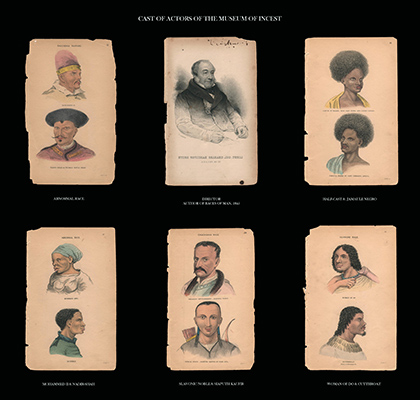The Museum of Incest is Simon Fujiwara’s fictive museum dedicated to the preservation and memory of incest practices throughout history. Composed of an architectural scheme that incorporates fragments of his own architect father’s unrealized designs with landmark museum architecture, an overtly personal story is inserted into an otherwise grander narrative in a parody of an academic lecture.
The museum is said to be situated in the Olduvai Gorge in Tanzania, the place where science has located the so-called Cradle of Civilization. Just as the development of humankind is based on a collection of historical remains, here the history and development of incest are pieced together based on objects from an imagined time when incest was prevalent or unavoidable. Though incest tends to be left out of most museums, here the artist approaches incest as a natural phenomenon in the development of mankind. The installation consists of two vitrines containing objects, a large mural, a video in which the artist introduces the museum, and a printed museum guide. Simon Fujiwara takes up the role of the designer of the museum.
The museum contains three parts: The Upper Galleries, the Pictures Gallery and the museum café in the basement. The basement café is an integral part of the museum architecture for its focus on the meal as a family gathering activity. In the café, one wall is covered with a mural by Simon Fujiwara’s father that depicts a family dinner. The artist zooms in on the relationship between the father and the son in the image. This painting is also displayed in the installation. By bringing his own persona into the incest frame, Simon Fujiwara makes apparent a negotiation between fact and fiction and adds to the fictional persona that he creates for himself as an artist.
Simon Fujiwara, born 1982 in UK, lives and works in Berlin

